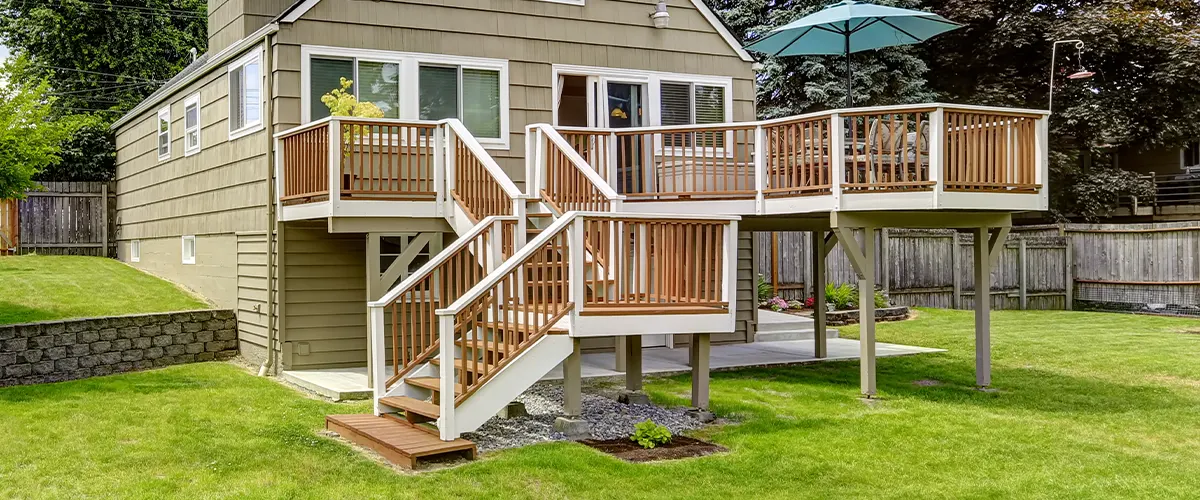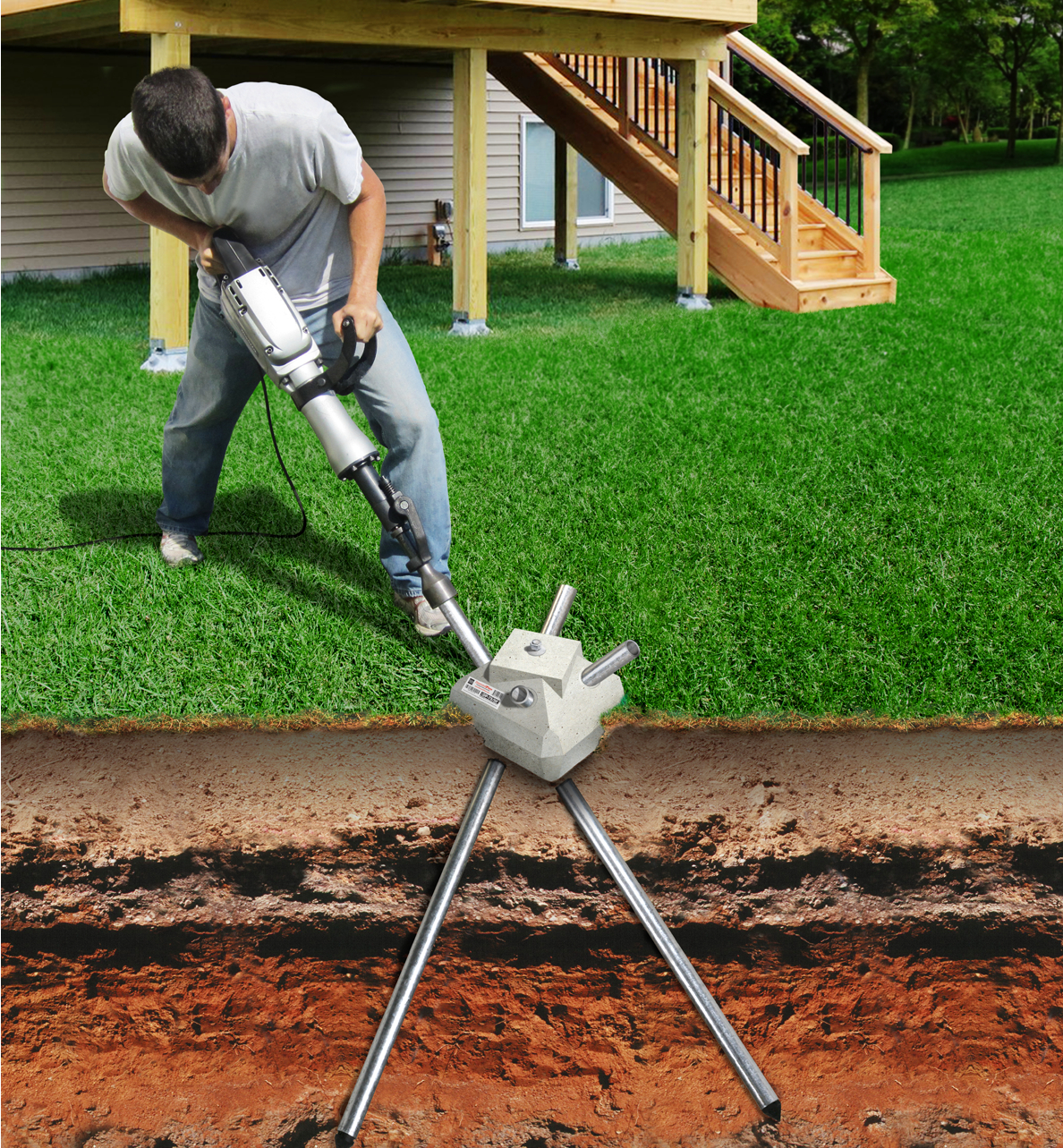Ensure Stability and Longevity With Correctly Installed Deck Footings
Deck grounds might not be the most glamorous aspect of deck construction, but they play a crucial role in making certain stability and long life. In this discussion, we will certainly discover the value of appropriate deck grounds, variables to take into consideration during setup, various kinds of grounds offered, step-by-step installation overview, and maintenance pointers for making certain lasting footings.

Relevance of Appropriate Deck Grounds
Why are effectively set up deck footings crucial for the security and durability of your deck? Deck footings are the structure on which the deck rests, transferring the load from the deck to the ground.
First of all, correctly installed deck footings distribute the weight of the deck evenly, protecting against any kind of irregular settling or sinking. This is specifically crucial in locations with unpredictable dirt, as it assists to alleviate the danger of the deck shifting or collapsing. Furthermore, well-installed footings make certain that the deck continues to be degree, avoiding any architectural damages that can happen when a deck becomes irregular.
Secondly, correctly mounted footings give a strong anchor for the deck, protecting against too much motion and guide. This assists to maintain the architectural stability of the deck, minimizing the danger of accidents or injuries. It likewise minimizes the damage on the deck, enabling it to withstand the aspects and regular usage for a longer time period.
Aspects to Consider for Deck Ground Setup
When mounting deck grounds, there are a number of crucial factors to consider for proper installment. Various dirt types have different load-bearing abilities, so it is critical to perform a soil test to ensure the grounds can support the weight of the deck and its occupants. By taking right into account these aspects, you can make sure the proper installment of deck grounds and delight in a stable and durable deck.
Types of Deck Grounds to Select From
There are several various types of deck grounds offered for you to pick from. Each type has its very own advantages and disadvantages, so it's important to consider your details requirements and the conditions of your deck before deciding.
One usual kind of deck footing is the concrete footing. This involves excavating openings in the ground and pouring concrete into them to create a strong structure. Concrete footings are resilient and provide excellent stability, making them ideal for decks in areas with challenging soil conditions or high wind lots.
An additional alternative is the helical pier ground, which consists of a steel shaft with helical plates that are screwed into the ground. These footings fast to mount and can be made use of in numerous dirt types, consisting of sandy or clay soils. They are additionally flexible, allowing for very easy progressing of the deck.
Sonotube footings are an additional prominent choice. These grounds are produced by putting a cardboard tube in a hole and loading it with concrete. Sonotube footings are reasonably simple to install and give appropriate stability for smaller sized decks or in areas with much less demanding soil problems.

When choosing the type of deck footing, it's important to think about aspects such as soil conditions, deck size and weight, local building codes, and personal preferences. By selecting the suitable footing type, you can ensure the security and long life of your deck.
Step-by-Step Overview for Setting Up Deck Footings

Determine the place: Start by marking the precise placement of each footing making use of stakes and string (Deck Footings). Take into account any kind of local building regulations or laws regarding obstacle ranges
Dig the holes: Utilize an article opening digger or an auger to dig the openings for the grounds. The deepness will depend upon the frost line in your location and the kind of soil. Typically, a depth of a minimum of 36 inches is advised for security.
Degree the openings: Ensure that all-time lows of the holes are level (Deck Footings). This can be accomplished by utilizing a degree or a straight board throughout the top of the openings
Include crushed rock: Area a layer of crushed rock at the end of each opening to boost water drainage and protect against the ground from sinking right into the dirt with time.
Insert the ground kinds: Put the ground creates right into visit homepage the openings, guaranteeing they are focused and degree. Use risks to secure them in place.
Mix and pour concrete: Follow the guidelines on the concrete mix bag to prepare the concrete. Put the concrete right into the ground types, filling them completely.
Smooth the surface: Use a trowel to smooth the surface area of the concrete and get rid of any type of air pockets. Allow the concrete to cure according to the producer's instructions.
Upkeep Tips for Durable Deck Grounds
Appropriate maintenance is vital for making sure the durability and stability of deck grounds. By consistently evaluating and keeping your deck grounds, you can avoid damage and possible safety threats. One essential element of upkeep is to frequently look for any kind of indicators of wear and tear, such as cracks or motion in the footings. It is vital to address them promptly to prevent more damage. if you see any type of concerns.
Regular cleansing is read this post here additionally vital for keeping deck footings. Dust, particles, and greenery can collect around the grounds, which can result in moisture accumulation and degeneration. Cleaning the grounds frequently, making use of a brush or a pressure washer, can aid prevent these problems and expand the life-span of your deck.
Along with cleaning, it is necessary to maintain the area around the footings free from any type of blockages. Stay clear of piling items versus the footings or permitting plants to grow as well close to them. These blockages can trap dampness and trigger the grounds to wear away in time.
Lastly, regular resealing of the footings is advised to protect them from wetness and various other ecological variables. Applying a water-proof sealer can aid prevent water damages and expand the life-span of the grounds.
Final Thought
In final thought, proper installation of deck footings is important for making sure security and durability of your deck. Elements such as soil type, load capacity, and neighborhood building regulations require to be thought about when selecting the best kind of deck footings. Complying with a step-by-step overview Extra resources for installment and routine maintenance will aid to make sure the footings remain durable and long lasting.
In this discussion, we will certainly discover the value of appropriate deck footings, variables to think about during installment, different types of grounds available, detailed setup guide, and upkeep suggestions for making sure lasting grounds. Deck footings are the structure on which the deck relaxes, moving the load from the deck to the ground.One usual type of deck ground is the concrete footing. Put the footing kinds: Place the ground forms right into the holes, guaranteeing they are centered and degree.In conclusion, correct installation of deck grounds is important for ensuring stability and long life of your deck.